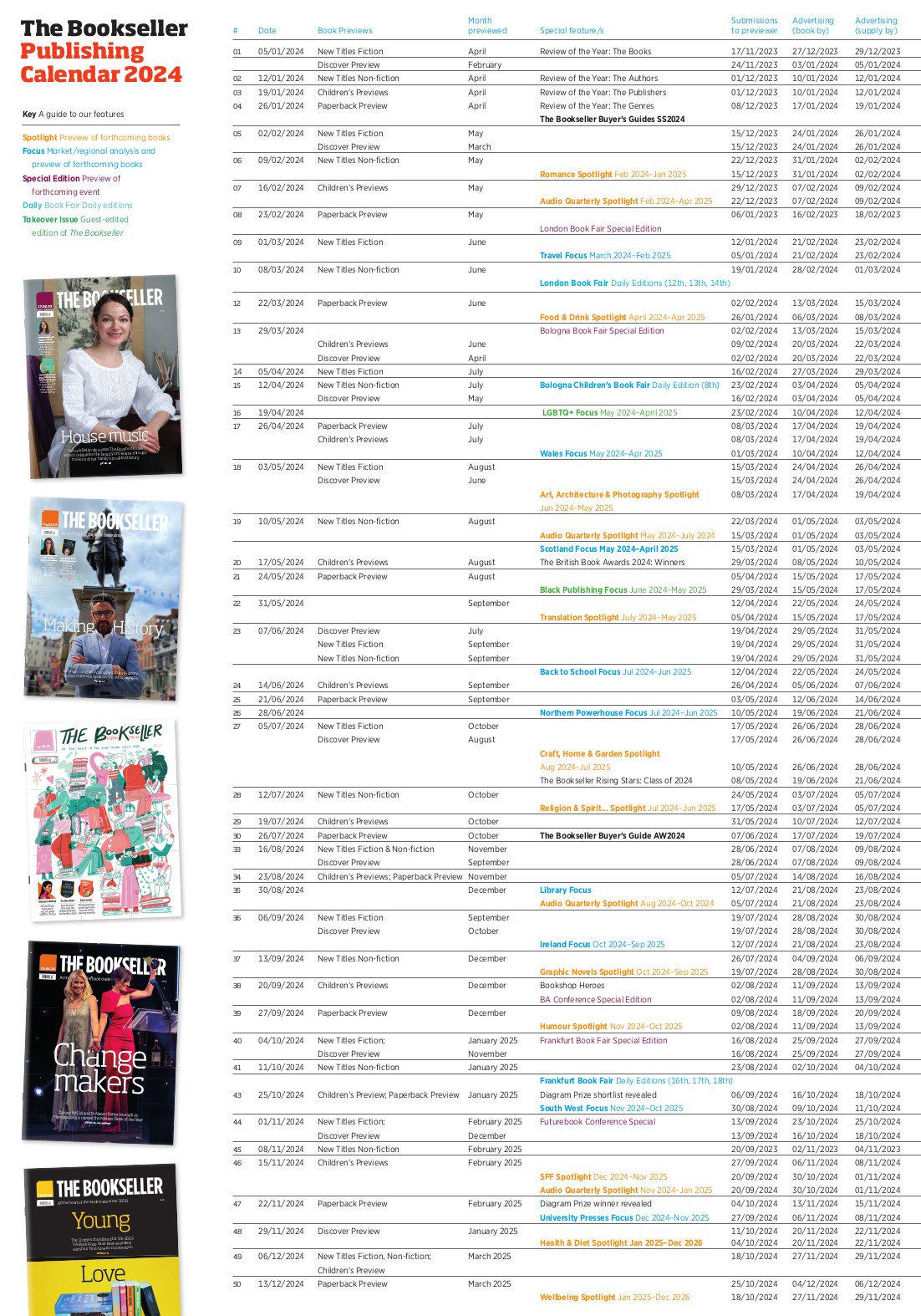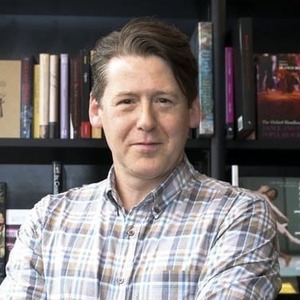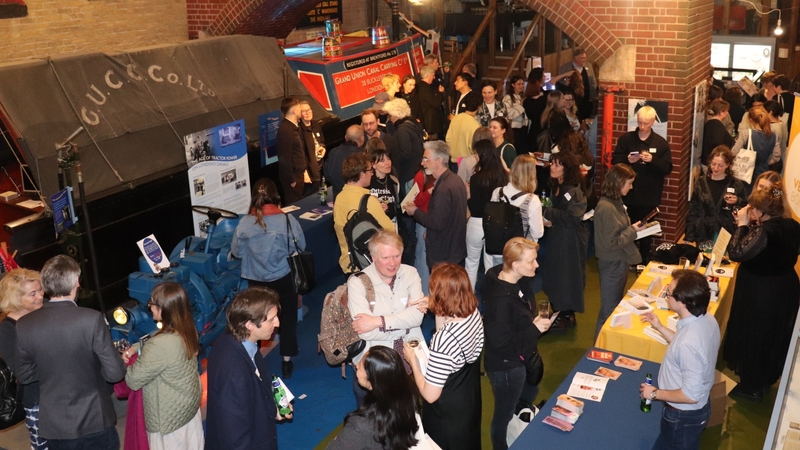You are viewing your 1 free article this month. Login to read more articles.
Ken Follett reflects on his decades-long career
Pan Macmillan is toasting Ken Follett‘s remarkable career at this year’s LBF—and it’s been quite the journey for the author.
When I admit Ken Follett to the Zoom, he is not in front of his computer but at the other end of his office, his back to me. And it is a long way across as—at least from my depth of field—his office is sizeable. But cosy: late Victorian edging to Arts and Crafts furnishings, wallpaper of warming yellow and red, soft lighting. The seconds tick on and still he does not turn and I half-wonder if this is a sort of power play to disconcert an interlocutor, the kind of device the scheming Bishop Waleran Bigod, one of the main villains in Follett’s first Kingsbridge novel The Pillars of the Earth, might employ.
Turns out Follett is just tending the fire (the poker he is using is shaped like a Mediaeval sword) and he scuttles quickly back to his computer when he realises I am waiting. I perhaps thought of Bishop Waleran as we are here to chat largely about the Kingsbridge series, which takes in around 900 years of British history through the people and events in a fictional Wiltshire wool-producing market town. The series has sold more than 50 million units worldwide (overall, Follett has shifted around 190 million copies), and Pan Macmillan is throwing a party at this year’s London Book Fair to launch the fifth and final Kingsbridge title, The Armour and the Light.
The books are about people who might be described as fairly ordinary going on to do extraordinary things
Like the previous Kingsbridge books, The Armour and the Light takes place in a time of great change. It opens in 1792 and concludes in 1824, encompassing the French and Industrial Revolutions; the Napoleonic Wars; and the societal upheavals of going from an agrarian age to one of mass production. Follett says: “If you go into the Victorian era, there were all kinds of steam-driven machinery being used for a lot of purposes. So I thought the late 18th, early 19th centuries would be a perfect period to look [at industrialisation] as it was just beginning and really only used in the cloth trade: it was a new phenomenon and people were only just responding to it. Also, there was the Combination Act, passed by Parliament in 1799, which effectively outlawed trade unions. It was repealed in 1824 but was a serious attempt to crush the aspirations of working people. Then I realised the Battle of Waterloo is right in the middle of this, a culmination of about three decades of constant wars with the French. What did that add to all this upheaval? I thought, ‘This will be a good Ken Follett story.’”
Follett never had any plans to write a centuries-spanning microcosm of British history. The Pillars of the Earth was published in 1989, the epic a step-change from his previous taut thriller heartland, which he entered with his breakthrough The Eye of the Needle (1978; originally titled Storm Island and later made into a hit film starring Donald Sutherland). The Pillars of the Earth was a bestseller at launch—and kept on selling. And selling. It is one of the biggest backlist novels of the Nielsen BookScan UK era, earning £4.1m since records began—and that does not include its first nine years of sales data. It has been spun out into a number of other media, including a TV adaptation, video game, German board game and Danish stage musical.
Follett says: “I didn’t foresee this becoming five books at all. If I had, I would have been more intimidated because The Pillars of the Earth was already intimidating. I was doing something more ambitious—telling the story of the building of a cathedral—than I ever had. And I kept going: adding characters, making up more and more about the politics and the people who would be building this church. Pillars... came in at 400,000 words—that was the size of about four of my previous books combined.”
A sequel was not on the cards but the fans changed Follett’s mind: “I do a lot of events in bookshops and I like to have a lot of questions from the audience as I think that’s the best part. At every single event, someone would stand up and say, ‘I like all your books. But when are you going to write another one like The Pillars of the Earth?"
He ruled out an immediate sequel as the story in Pillars... had run its course, but wanted a similar big event, like building a cathedral, to centre the narrative. So the subsequent books tackle how Kingsbridge deals with the Black Death (World Without End), Protestant and Catholic conflict during Elizabeth I’s reign (A Column of Fire) and, in the prequel The Evening and the Morning, the tumultuous Danelaw and Anglo-Saxon period.
But Kingsbridge is always the star, with the bulk of the novels concerning how regular townsfolk make their way through cataclysmic events. Follett says: “The books are about people who might be described as fairly ordinary going on to do extraordinary things. Anchoring that in Kingsbridge helps, because it is a type of town that is familiar to readers: they know the type of people there, its geography. How normal people react to big events brings history home and makes it more real. It’s a bit boring to constantly always view history through kings, queens, ambassadors and so on—you might as well read the bloody Economist.”
Follett’s philosophy
Follett was born in Cardiff in 1949, studied philosophy at University College London and worked as a journalist and in publishing before moving to fiction. His first titles were, he cheerfully admits, “pulpy hack books done for money”, such as Amok: King of Legend, a 1976 King Kong knock-off written as Bernard L Ross; and Capricorn One, a novelisation of the 1978 conspiracy thriller film of the same name about NASA faking its first manned mission to Mars. But that work helped hone his craft before he hit with Eye of the Needle and a subsequent string of espionage bestsellers throughout the 1980s.
But I will admit to thinking occasionally about somebody in 100 years picking up The Pillars of the Earth and that it might be an enjoyable way to bring the Middle Ages alive for them
His success of crossing borders—he has been translated into 43 languages—Follett suggests, comes back to lessons learned in “the hack years”: “I write quite direct prose. There’s nothing tricksy, which may help translators. I’ve talked to Lee Child about this, because he doesn’t always do so well in translation. And he says that his Jack Reacher books are driven by a sort of laconic, two-fisted writing style. In some languages, that’s going to be very difficult to translate.”
This dovetails to a discussion of Follett’s legacy. I was at an event in 2008 when a statue was unveiled of him in the Basque capital Vitorio, partly because of his immense popularity in Spain, but mostly because he helped raise funds for the restoration of the city’s cathedral. “I was hugely flattered; it was surreal,” he says. “But I’m glad the statue is taller and far more handsome than I am in real life.” Since there is a physical monument to him that could very well be standing for centuries, does he think about how his work will be received in the long-term? He replies that he lives near Knebworth, the Hertfordshire stately home now most famous for the rock festivals that used to be held on its grounds. In the 19th century, Knebworth was owned by the politician and bestselling author Edward Bulwer-Lytton. Follett says: “At the time, Dickens was considered to be very vulgar, while Bulwer-Lytton was more highly regarded: he wrote about the aristocracy and refined people. No Victorian would have predicted that in almost 200 years’ time Dickens would be revered around the world and Bulwer-Lytton pretty much forgotten. That’s a long way around to saying it is so hard to predict these things. This kind of literary posterity doesn’t matter greatly to me. But I will admit to thinking occasionally about somebody in 100 years picking up The Pillars of the Earth and that it might be an enjoyable way to bring the Middle Ages alive for them. That would be nice.”












